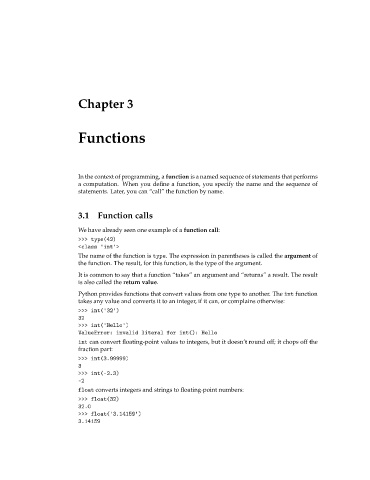Page 39 - thinkpython
P. 39
Chapter 3
Functions
In the context of programming, a function is a named sequence of statements that performs
a computation. When you define a function, you specify the name and the sequence of
statements. Later, you can “call” the function by name.
3.1 Function calls
We have already seen one example of a function call:
>>> type(42)
<class 'int '>
The name of the function is type . The expression in parentheses is called the argument of
the function. The result, for this function, is the type of the argument.
It is common to say that a function “takes” an argument and “returns” a result. The result
is also called the return value.
Python provides functions that convert values from one type to another. The int function
takes any value and converts it to an integer, if it can, or complains otherwise:
>>> int( '32')
32
>>> int( 'Hello ')
ValueError: invalid literal for int(): Hello
int can convert floating-point values to integers, but it doesn’t round off; it chops off the
fraction part:
>>> int(3.99999)
3
>>> int(-2.3)
-2
float converts integers and strings to floating-point numbers:
>>> float(32)
32.0
>>> float( '3.14159 ')
3.14159

